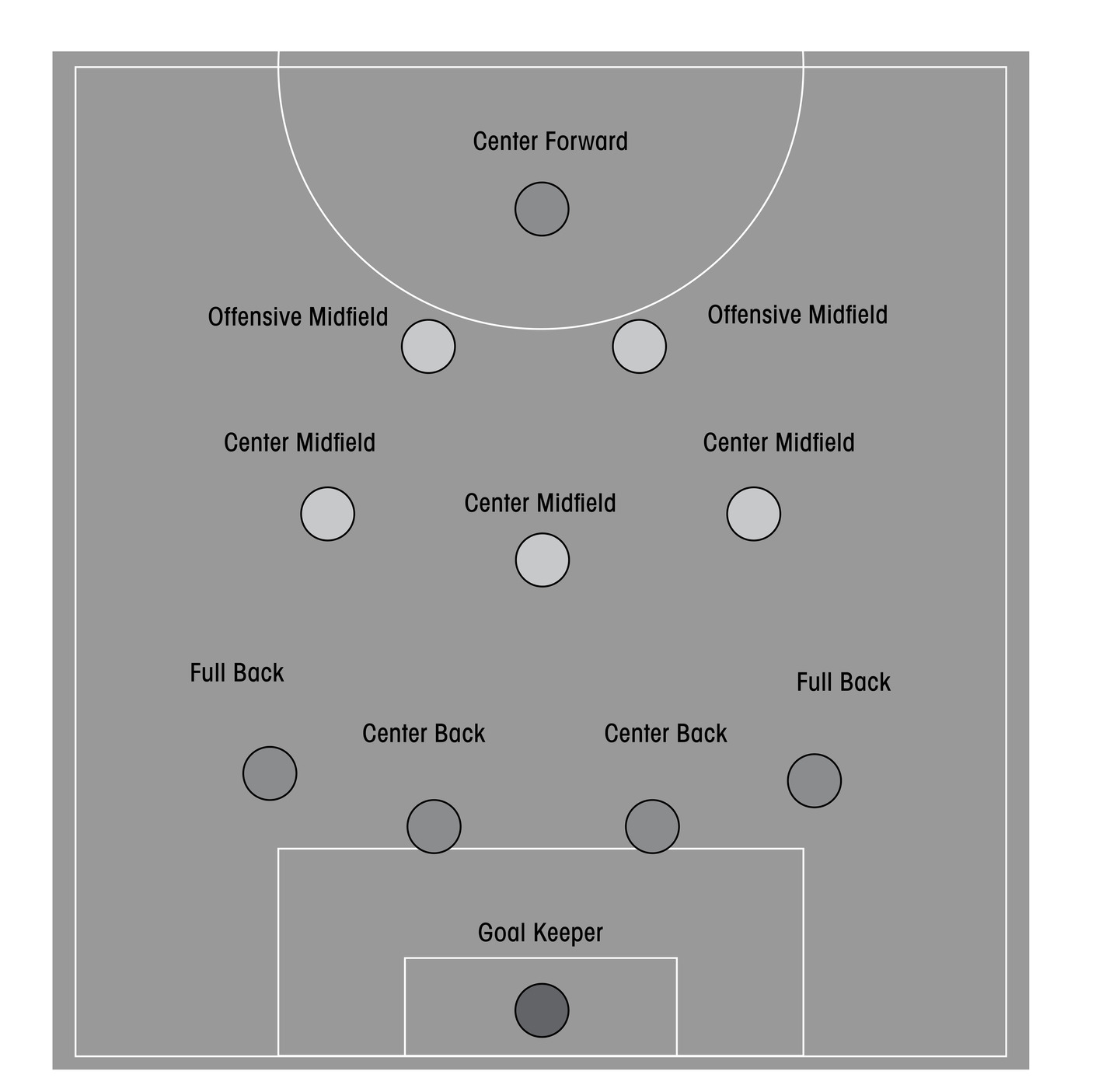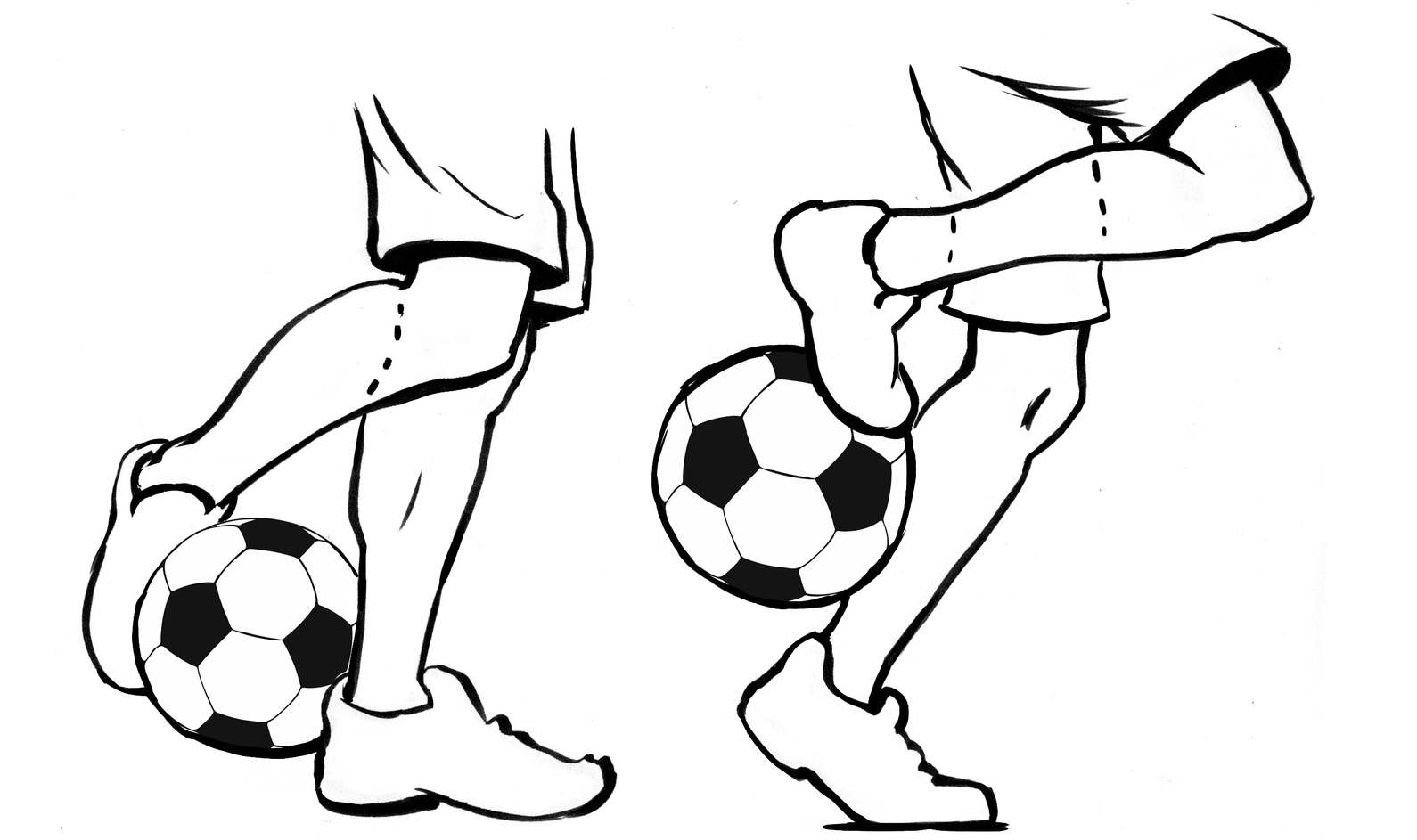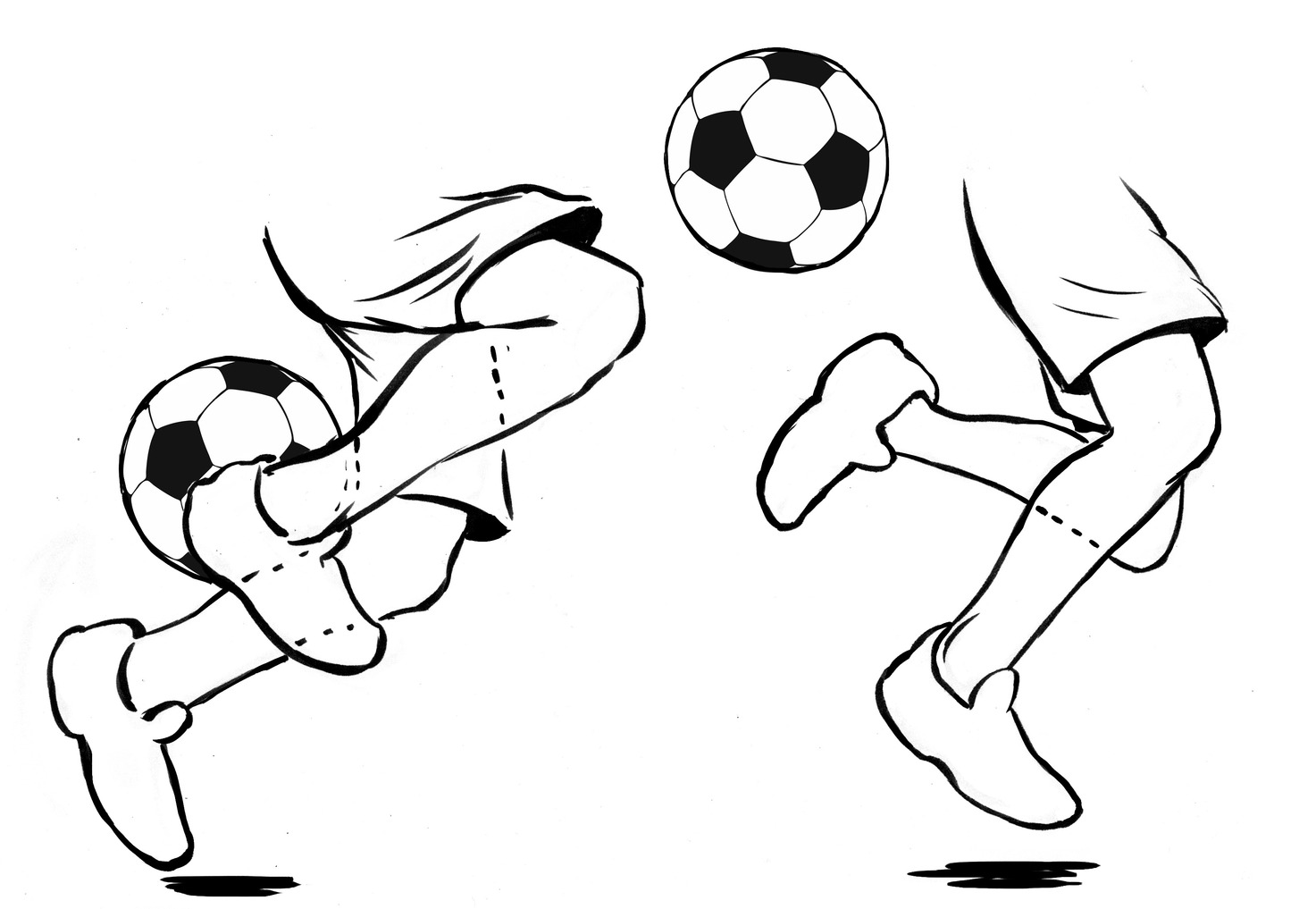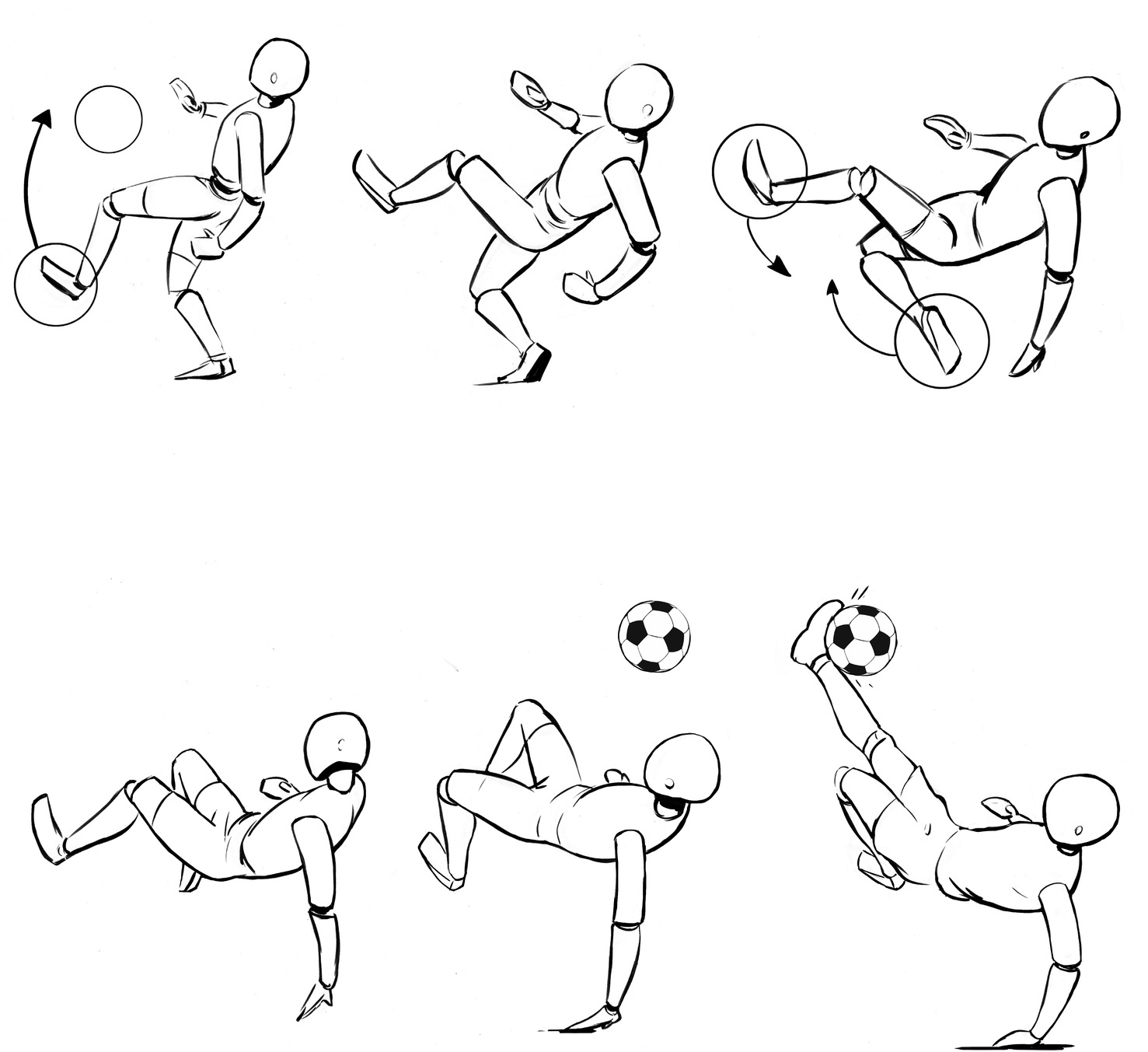

SOCCER POSITIONS. Soccer teams usually have one goalkeeper and ten field players. The team splits the field players into three kinds of positions: forwards, midfielders, and defenders.
★ A forward’s job is to score goals.
★ Midfielders pass the ball up the field to the forwards, and they also try to help keep the ball away from their own goal.
★ Defenders play closest to their team’s goal and must stop the other team from scoring.
A coach can organize the forwards, midfielders, and defenders into many different formations. Here’s an example of one:


ANCIENT HISTORY. Sports that feature kicking leather balls into nets have been around for thousands of years. Modern soccer emerged in England in 1863, when teams met to create rules.
WHAT’S IT CALLED? Soccer is called soccer in the United States. But it’s called football almost everywhere else in the world.
THE WORLD CUP. The World Cup is the biggest soccer tournament. Billions (yes, billions!) of people watch it. There is a tournament for men’s teams and a tournament for women’s teams. The women’s World Cup typically takes place one year after the men’s. Both are played every four years in a different country. The winner receives the World Cup Trophy. The original men’s trophy was stolen in 1983 and has never been found! The current trophy is fourteen inches tall and made of solid gold. It weighs over thirteen pounds!
RUNNING. Some soccer players run seven miles or more in a World Cup game.
ONE TOUGH GAME. As of July 2015, the biggest defeat in international soccer was Fiji’s 38–0 win over Micronesia. The match was part of the 2015 Pacific Games. This tournament was an early step in qualifying for the 2016 Olympics.
TIME TO GO PRO? Recently, a twenty-month-old was signed to a professional soccer contract in Belgium. Although it’s much too early to tell if young Bryce Brites will be any good at soccer when he grows up, the soccer team (FC Racing Boxberg) thinks he’s very good…for his age.
TRY THIS AT HOME. Dan Magness from England holds the world record for keeping a soccer ball in the air without dropping it or touching it with his hands. In 2010, Dan juggled a soccer ball using his feet, legs, chest, shoulders, and head for twenty-six hours!
NO SHOES, NO PLAYING. One of the reasons that India withdrew from the 1950 World Cup was because its team wasn’t allowed to play barefoot!
FALLING DOWN. In a 1938 World Cup semifinal game, an Italian player’s shorts fell down just before an important penalty kick! While the goalie was laughing at what had happened, Giuseppe Meazza quickly picked his shorts back up and made his shot. He scored! The goal got Italy into the World Cup final.
COOL MOVES!
Sometimes players do amazing kicks. They are one of the great things that make soccer such an exciting game to watch. Here are two examples of surprising kicks:
THE RAINBOW KICK. A rainbow kick is used to help a player get past a defender. To do a rainbow kick, you roll the ball up the back of your leg and then flick it up over your head. The ball will fly into the air over the top of your head, arcing like a rainbow, and land in front of you. (You can even make the ball go over the top of an opponent in front of you!)
1. Trap the ball between your feet. One foot is in front of the ball. The other foot is behind.


2. Use the top of your back foot to roll the ball up the calf of your front leg.


3. Lean forward and pop your heel up. This will flick the ball into the air.


THE BICYCLE KICK. Bicycle kicks are usually used to make a shot. They’re also called scissor kicks. To do a bicycle kick, a player jumps up and falls back while the ball is in the air.


As the player falls back, they kick the ball over and behind them.


NOTE: Bicycle kicks can be dangerous! Talk to a parent or coach before you try one.